B. Karinian, one of the first Chairmen of the Central Executive Committee (Government Heads) of Soviet Armenia, penned numerous articles and books examining the Armenian issue and nationalist movement. I have republished some of his articles which were originally published as a series in 1928 in a book entitled “Armenian Nationalist Movements” [1] . Karinian wrote another important article for the Armenian Communist Party’s Central Committee publication Karmir Droshak in 1919. This article entitled “Independent Armenia” was later published in the June 22 and 29, 1919 issues of Zhizn Natsionalnostey (Life of the Nations) the weekly publication of the People’s Commissar of Nationalities headed by Stalin [2].
At the time the scholar and statesman’s article was published, it had been a little over a year since Armenia declared independence (on May 28, 1918). During that time in Turkey, the War of Independence had not yet begun under the leadership of Mustafa Kemal. The views Karinian put forward in his article show how strong his foresight was. On the other hand, the fact that Turkish-Soviet friendship was not yet official indicates that these writings on the Armenian issue were not written to support Turkey, but rather to convey actual ongoing events.
“This Illusion Has to be Stopped”
Karinian starts his article by mentioning that Armenian nationalists were celebrating their victory in tandem with the British-French Imperialists. Not only the Dashnaks but also moderate movements of conservative and liberal Armenians were also greeting “independent” and “free” Armenia with joy. All the new state’s supporters tried to convince the people that a new era had started for the country, and that the worst would be left in the past.
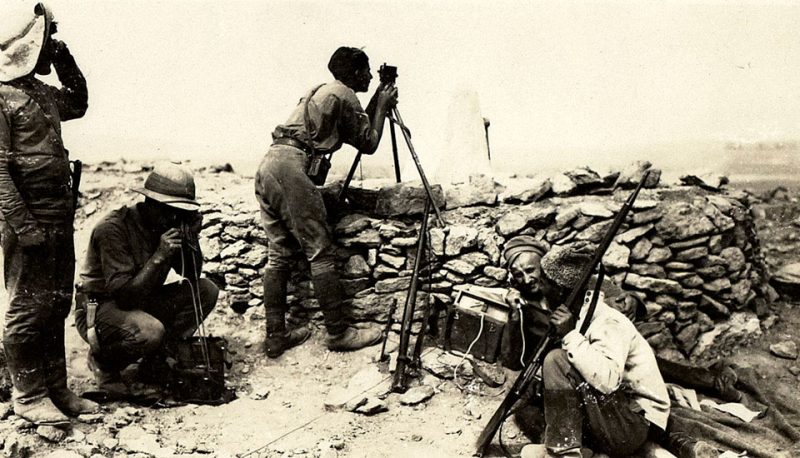
National Army Museum. https://collection.nam.ac.uk/detail.php?acc=1983-12-71-161
Karinian specifies that there were a number of defenders of such beliefs. A large portion of the Armenian people had this viewpoint pushed on them day and night. The imperialist war was coming to a close, the working masses were tired of the war and inclined toward any idea that would allow them to breathe a little. Everyone wanted to get a normal job and dreamt of a new life. Armenians living in Russia and Turkey together with the Armenian immigrants fleeing their home country believed that this “new life” would become a reality in a “free” and “independent” Armenia. The masses who bought into this belief lined up in order to return to their homeland.
According to Karinian, the duty of the Armenian communists was to put an end to this illusion. The Armenian Bolsheviks owed the masses full disclosure regarding the true face of “independent Armenia” which was established with the help of the imperialist world. Those who returned to their country had to get acquainted with the true status and future of the country: the realities glossed over by the Armenian nationalists needed to be faced head on.
The Dashnaks’ demands of Great Armenia
The Dashnaks frequently argued detailed ideas regarding “Independent Armenia”. In one such instance, Dr. A. O. (Hamo) Ohanjanyan, a committee member at the Paris Conference and became the head of Dashnak government from May to November 1920, told a correspondent from the Italian newspaper Il Secolo that the government’s request to the major powers were that Armenia be established within its prewar boundaries and conditions prior to the time of Abdülhamid and the Young Turks’ regime. The regions where Armenians lived (Six Vilayets, Cilicia -Aintab, Adana, Marash periphery- and Southern Caucasia) were to be included within the country’s boundaries. This united and independent Armenia was to be recognized by the Paris Peace Conference as a member qualified to send a representative. Armenia was also to be accepted to the League of Nations, have a surface area of 300,000 square kilometers and a population of 4 to 5 million. Following these demands, Ohanjanyan listed economic requests.
A Country Surrounded by Enemies on all Sides
According to Karinian, these demands were overly optimistic. Karinian was sure that British-French Imperialism would erase this optimism in short order. In spite of all hopes of the Armenian nationalists, much narrower borders were drawn to encircle Armenia at the Versaille Conference. The “Armenian Republic” was surrounded by enemy governments of different nations on all sides.
“Ermeni milletinin ‘temsilcilerinin’ önderliğinde Ermeni halk kitlelerinin hareketi, her zaman büyük devletlerin diplomatları tarafından dikte edilmiştir. Bu ‘temsilciler’, her zaman büyük işgalcilerin ellerinde birer silah olmuşlardır.” (???????? s. 14) @MehmetPerincek pic.twitter.com/pwuVppwmYC
— Ceyhun Bozkurt (@cyhnbzkrt) April 24, 2020
The Despotic National Politics of the Dashnaks
Karinian underlined that the “independent” Armenian government would treat other nationals living within its borders as second-class citizens and follow despotic national policies. Considering that Armenians make up only one third of the total population, the role that the Armenian bourgeoisie was to play within the framework of nationalistic governance also became clear. The government of the new “republic” would not only confront the Armenian proletarian and peasant masses within the country, but also the majority of the populations of all surrounding countries. All other non-Armenian elements were to become centrifugal forces, flee the country and try to establish connections with neighbors. All of these elements hated the Armenian government for crushing them and dreamed of demolishing the shaky structure built by these small despots. The neighboring countries threatened to crush the Armenians within their boundaries and then come to reckon with Armenia. In Karinian’s words, such a situation was inevitable. Naturally, military actions would also come about as a result.
Of course, the Armenian government would be forced to establish armies to fight with internal and external enemies. In such a case, Armenia would need to act immediately to establish a “national army”, but this duty would be difficult, if not impossible to achieve. Even the most fanatic nationalists were aware of this.
The Dashnak Government’s Dependence on British-French Troops
Establishing a national army was a difficult prospect because Armenia was in complete ruin. The country was incapable of feeding its own population without foreign aid, so making an army out of the question. The people were exhausted from wars and many had become refugees as a result of mutual massacres between various peoples; they longed for a normal life and friendly relations with their neighbors. From this perspective, the Armenian bourgeois government was in dire need of others’ swords. Ironically, “Independent Armenia” would not be able to survive without receiving foreign aid.
Later, Karinian puts forth the following question: are these British-French forces going to stay in Turkey indefinitely? According to Karinian, in order to answer this question, one must keep in mind that the push to eliminate mobilization was gaining strength with each passing day in Europe. Capitalist Europe was scared of communism, and the ideology was rapidly spreading among the soldiers. For this reason, Europe wanted to end their mobilization, pull back its soldiers and return back to its industrial life at the earliest opportunity. This was the duty of the world in the aftermath of the Versaille Conference.
The Role of the Armenian Legions in the Strangling of the Nationalists
For this reason, the European imperialists wanted to set up armies composed of locals and use them to establish “order”. France was already doing so in its colonies. England had resorted to the same in India, and wanted to do so in Turkey. The Armenian legions had been established in Cilicia already. Karinian continues to evaluate the situation as follows:
“All these local armies are capable of fulfilling important duties only when European imperialism’s disciplined armies are by their side. Establishment of armies from local people, in an exactly opposite situation, becomes the most important agent of national strangling, anarchy and revolution. This is the situation likely to occur in Turkey following the weakening of the European armed forces after they put an end to the mobilization.”
The Laborers of the East become the Enemies of the Puppet States
Karinian states that the “independent Armenian Republic” will be a cause for new sorrows and pain unless these facts are taken into account. The national minorities living in the country from one side and neighboring countries from the other side will attack the Armenians before anything else. All of the laboring masses of the East that are full of hatred towards Europe will target Armenia country first, seeing it as a base of imperialism. Following these statements, Karinian underlines that there will undoubtedly be a spontaneous and unorganized character during the first stage of the development of the laborers’ revolutionary action. During this spontaneous development stage, the people will suffer above all. From this perspective, Karinian claims without a doubt that the “independent Republic of Armenia” would mostly harm the Armenian laborers.
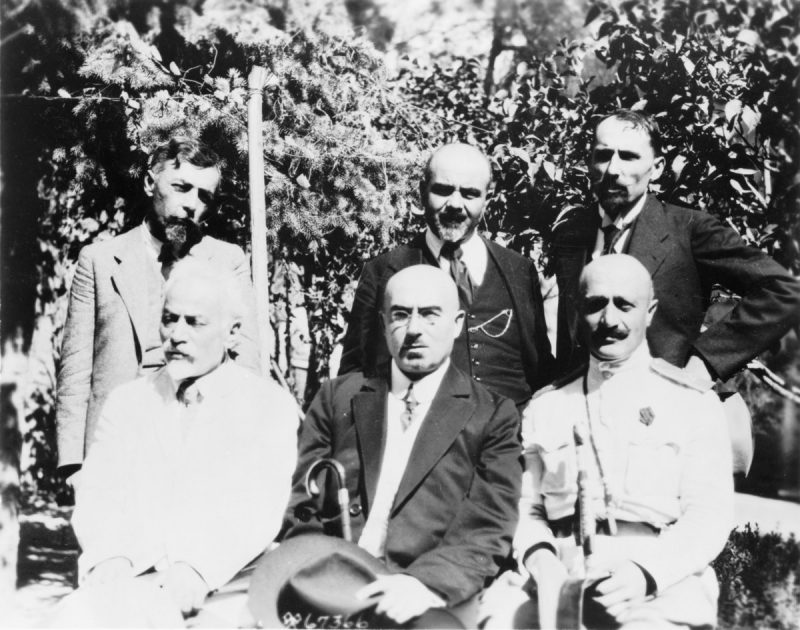
United States Library of Congress‘s Prints and Photographs division , the digital ID cph.3c02032
The Dashnaks’ Distortion of History
Following his diagnosis, Karinian suggests that those who established “independent Armenia” believe deep down that a simple statement and backing from US President Wilson would be enough to achieve real independence. Even Ohanjanyan was sure that Armenia would follow a policy independent of any country or government. According to Karinian, such beliefs were proof that Armenian intellectuals were unable to free themselves of outdated pre-capitalist romanticism. Representatives of the 20th Century Armenian bourgeois were bragging about feudal Armenia. Hatissian, one of the previous prime ministers of Dashnak Armenia, published a series of articles bragging about the Armenian feudal lords. This blind idealist approach has spread roots among Armenian intellectuals and even literature. The excavations performed in the city of Ani, and the examination and research into the history of Armenia had almost always been the fruits of these romantic nationalists.
According to Karinian, Armenian intellectuals and especially the small Armenian bourgeois have always adored the days of princes, lords and armored knights. To the present, they have pushed an idealized and idiosyncratic vision of “Armenia”, unable to think about it in any other way. The Armenian bourgeois like very much to decorate their current anxiety and desires with the colors and flowers of the romantic middle ages. Mr. Ohanjanyan and a wide section of Armenian intellectuals followed him along this path.
“Dashnaks are Preparing the Economic End of the Country”
Karinian also emphasizes that the Armenian bourgeois is incapable of developing an independent national capitalism, and that it would be futile to try to develop it through their collaborationist policies and capitalist methods. In the era of imperialism, the power of Armenia and its bourgeois was not nearly as powerful as the financial sector and could not go any further than becoming an agent of the imperialist monopolies. No matter how “independent” they became, small scale countries like Armenia would not be able to escape becoming the marketplace of the imperialist states. The example of the Balkans is the most direct evidence of this. Therefore, the Dashnaks who wanted to bond the future of Armenia to the victory of the imperialists were in reality preparing the economic and political end of the country.
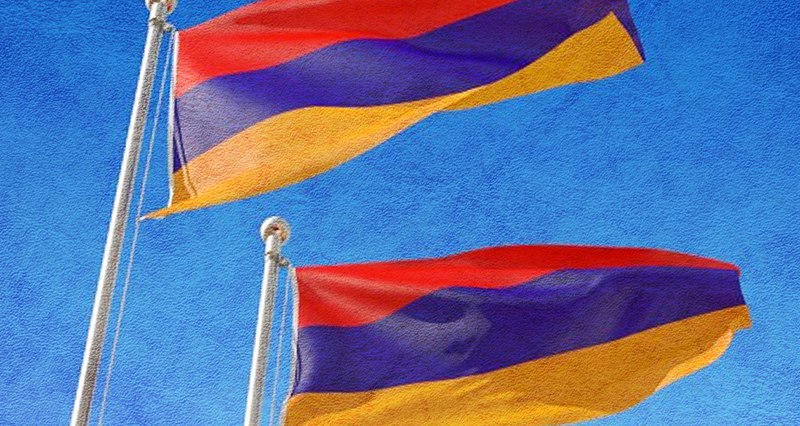
Lessons for the present
Karinian’s article sheds light on current developments just as much as it helps illuminate the Armenian issue. There is no difference between the “Big Kurdistan” project of the US and Dashnak Armenia, whose essence Karinian reveals. The destiny of this puppet state which will serve as the avant-garde of imperialism and base for war against regional states is the same as Dashnak Armenia’s. Of course, the Kurdish people will pay the heaviest price within this schema. For this reason, Karinian’s warnings must be heeded by those who hope to establish this Kurdish clown state and be dispelled of such illusions.
Notes
[1] From these articles, we can summarize Karinian’s views as: – Armenians of Turkey have lived in much better conditions than the Armenians of Russia. – The reason for the aggressive nature of the Armenian nationalism is because the Armenian bourgeoisie has portrayed a collaborator character since its birth. – “Dashnakism” is a continuation of the aggressive Armenian nationalism. – Dashnaks have become a tool for Western Imperialism and Tsarist Russia at every turn of events. – Dashnaks basically started an anti-Turkish chauvinist campaign much earlier than World War-1. By forming volunteer units, they fought not only in the Caucasus front but also under the command of the Imperialistic powers in the Dardanelles. – The biggest obstacle facing “Greater Armenia” was the undisputed fact that the Armenians were a minority in comparison to the Muslim population in the region. For this reason, the Armenian volunteer units systematically massacred the Kurdish and Turkish populations. These massacres were at a level to infuriate even the Tsarist commanders who were using the Dashnaks for their own endeavors. – The Dashnak Armenia which was established after World War-1, built a wall between revolutionist Turkey and Soviet Russia. – The land policy of the Dashnak government was based on pillaging of Turkish villages. See A. B. Karinian, Armenian Nationalist Movements, Kaynak Publications, Istanbul, 2007.
[2] A. Karinian, “Nezavisimaya Armeniya”, Zhizn Natsionalnostey, 22 and 29 June, 1919







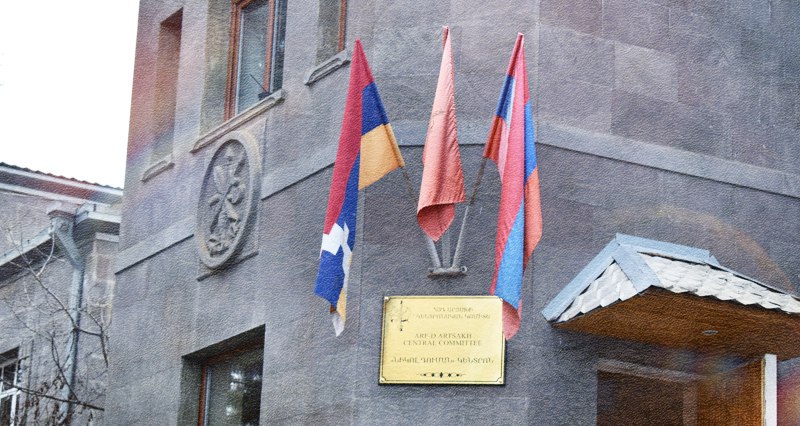

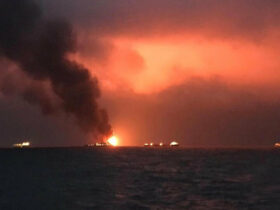
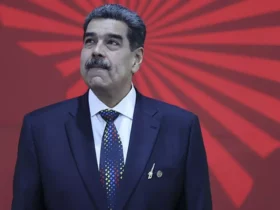
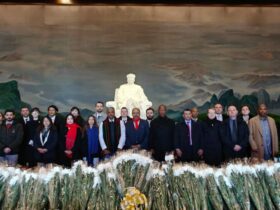
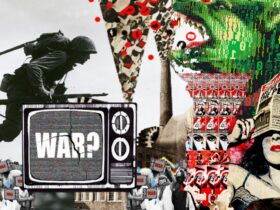
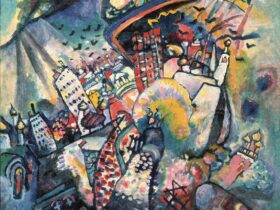
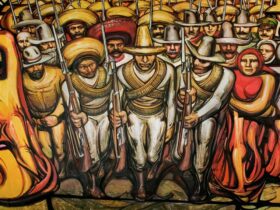
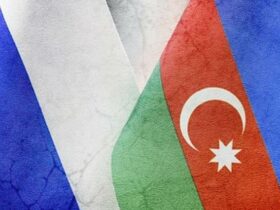

Leave a Reply